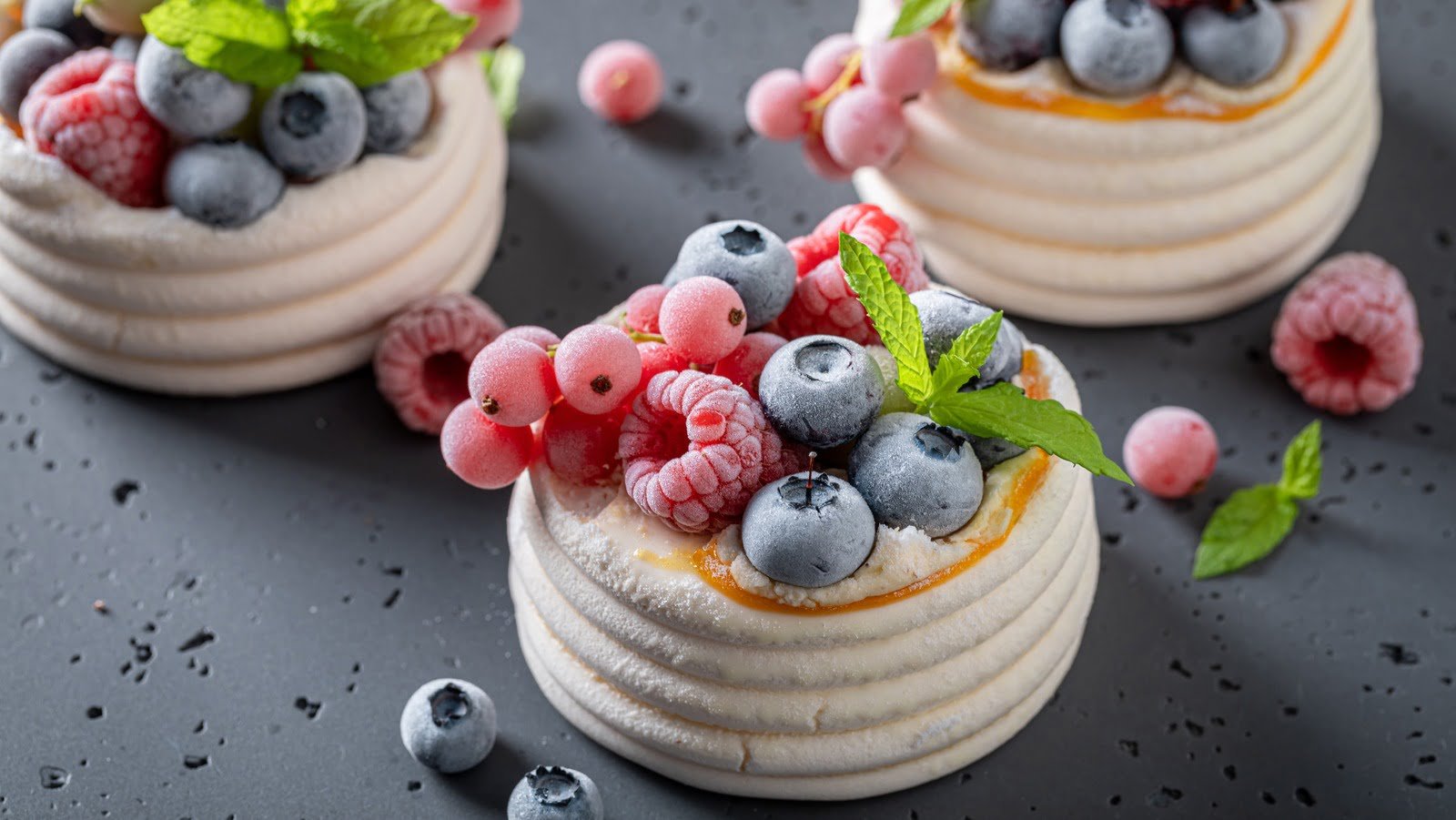Take Me to the New Zealand Cuisine Recipes
New Zealand, a picturesque island nation in the southwestern Pacific Ocean, is renowned for its stunning landscapes, from the majestic Southern Alps to the lush rainforests and the serene beaches that outline its coasts. It also boasts the unique New Zealand Cuisine.
The typical climate ranges from subtropical in the north to temperate in the south, with abundant rainfall nurturing its verdant scenery. New Zealand is geographically isolated, which has influenced its unique biodiversity and, by extension, the distinctive New Zealand Cuisine.
The main industrial activities include agriculture, tourism, and film production, with dairy farming leading its exports. Despite its vast lands, New Zealand is home to a relatively small population of around 5 million people, a melting pot of cultures that have shaped its national food dishes.
New Zealand Cuisine – Key Takeaways
- New Zealand’s cuisine is a reflection of its diverse population and agricultural heritage.
- Traditional Maori dishes and British colonial influences are at the heart of many recipes.
- The country’s vast coastline provides an abundance of seafood, a staple in the local diet.
- New Zealand’s agriculture produces high-quality dairy, meat, and wine, essential to its food scene.
- The fusion of indigenous and immigrant food traditions has created a unique culinary identity.
- Seasonal and fresh ingredients are the cornerstone of New Zealand’s gastronomy.
Take Me to the New Zealand Cuisine Recipes
You may also Enjoy the Following Articles
- North and South American Cuisine – A Culinary Expedition
- Europe Cuisine: Savor the Continent’s Best Culinary Secrets!
- African Cuisine: Discover the Bold Flavors & Global Charm!
- Asian Cuisine Unlock its Secrets – Taste, Health & Global Influence!
- Australian Cuisine – A Delightful Taste Adventure
Where is New Zealand?


Index to Contents
- Take Me to the Recipes
- More Articles
- The History and the Effect It Has Had on the New Zealand Cuisine
- How New Zealand’s Climate and Geography Has Influenced the Cuisine
- What is New Zealand Cuisine?
- New Zealand Culinary Traditions
- Traditional New Zealand Cuisine
- Exploring New Zealand’s Ingredients: The Flavors of New Zealand Cuisine
- How Healthy is New Zealand Cuisine?
- New Zealand Cuisine Recipes to Try at Home
- New Zealand Smoking Ban
- Conclusion
- FAQ’s
Savor iconic New Zealand Food Recipes – Click on each tantalizing picture to open up the Recipe
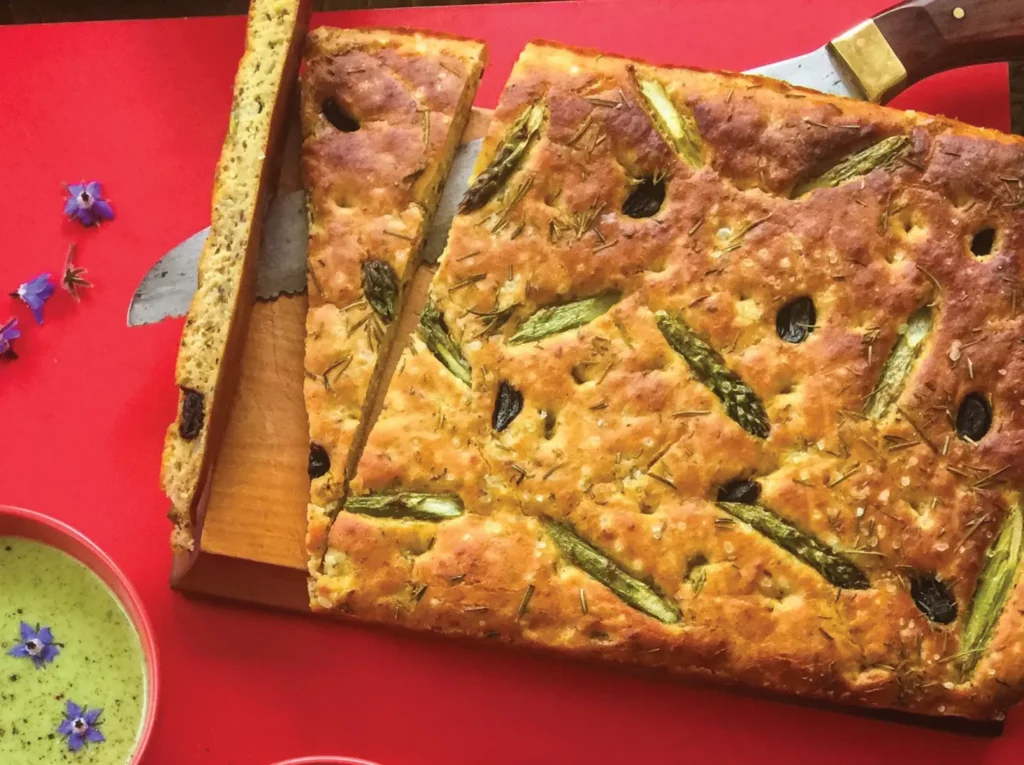
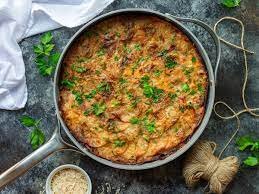

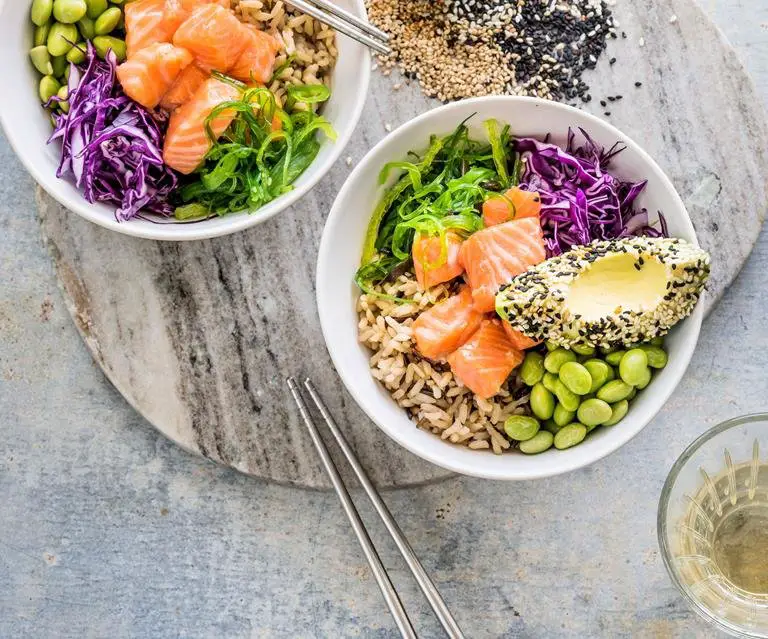

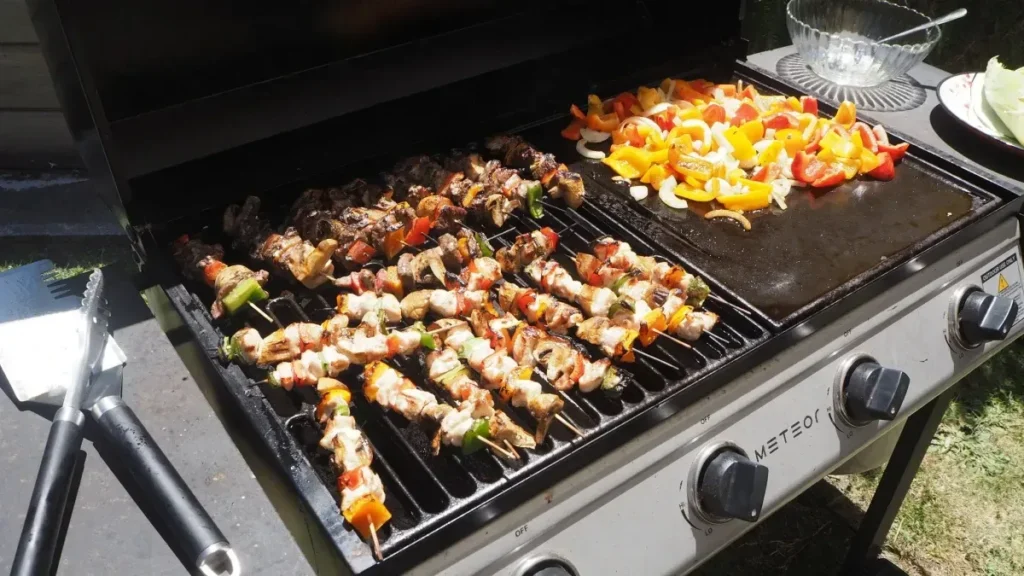

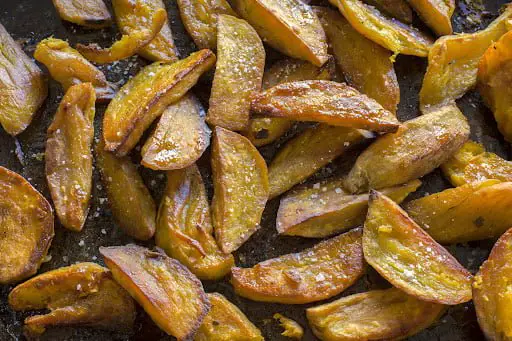
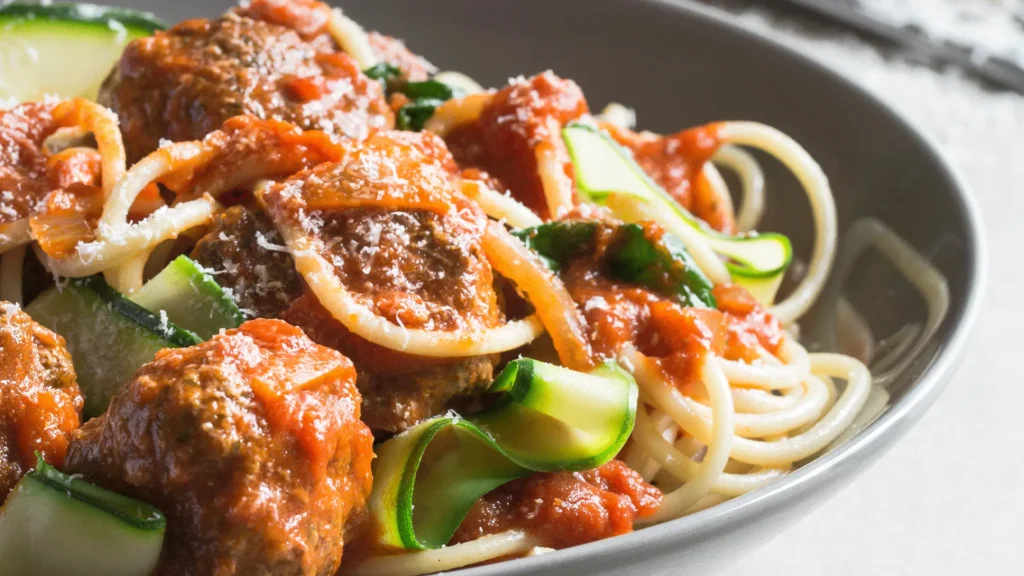

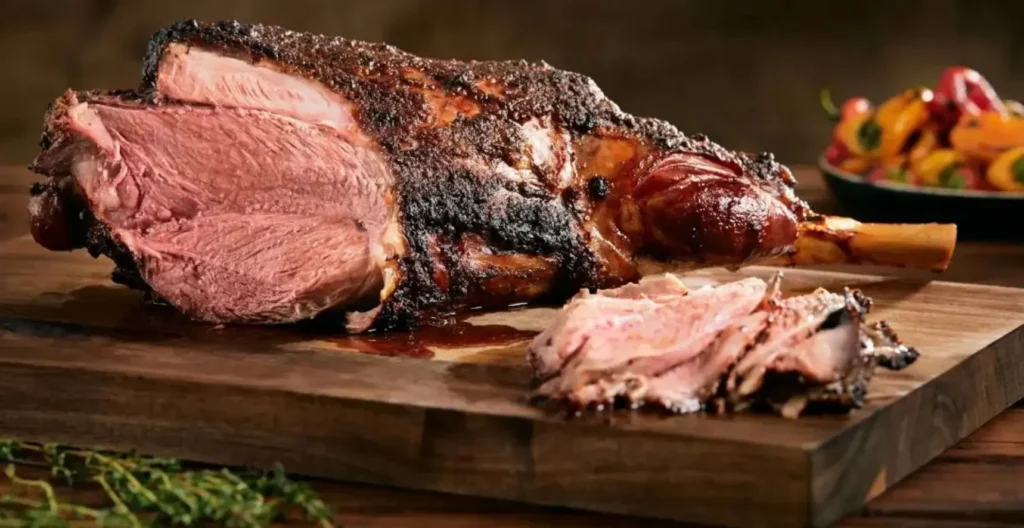

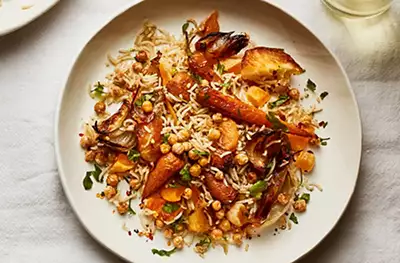
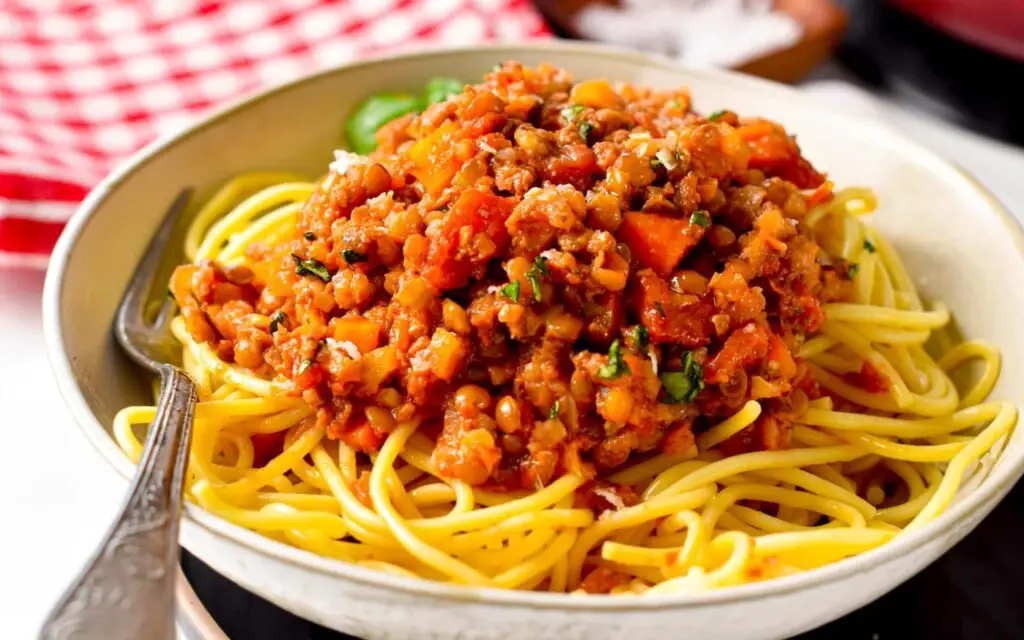

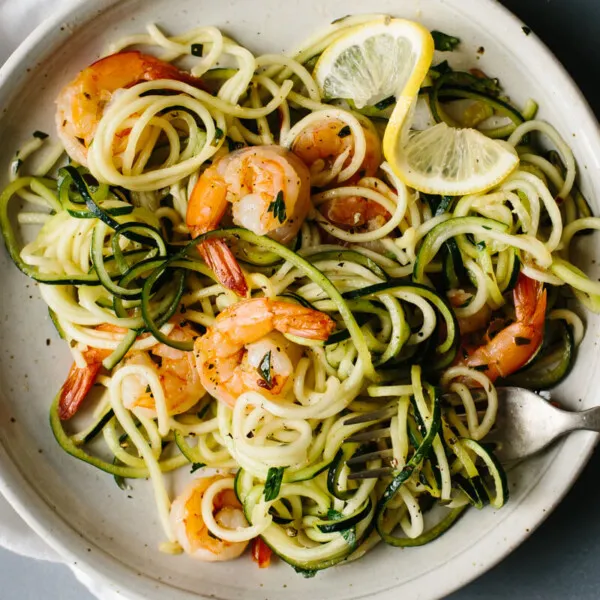

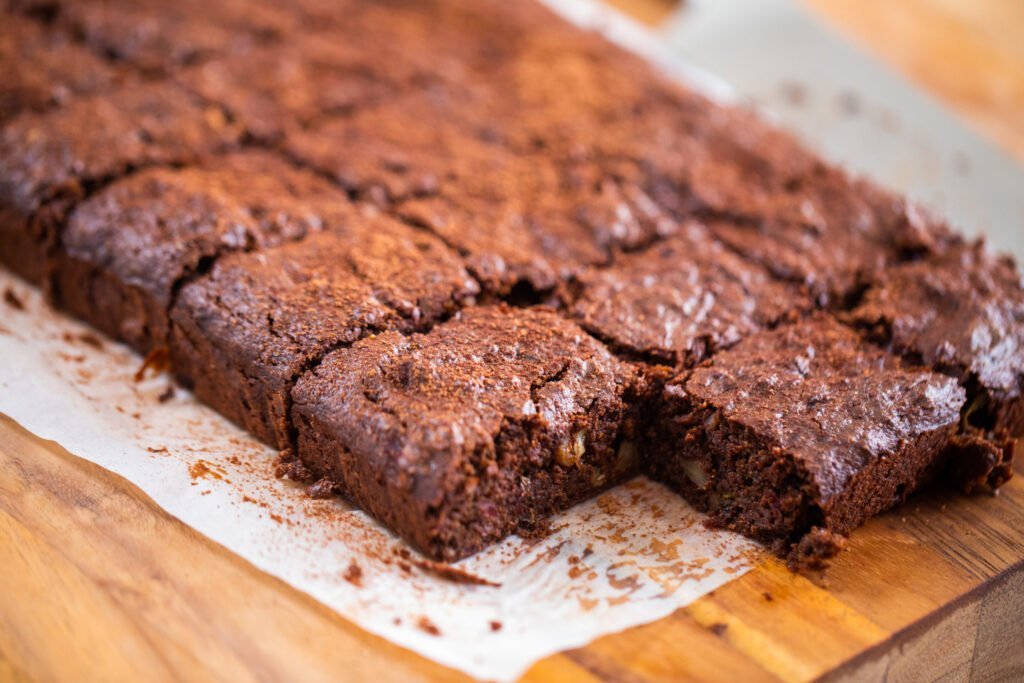
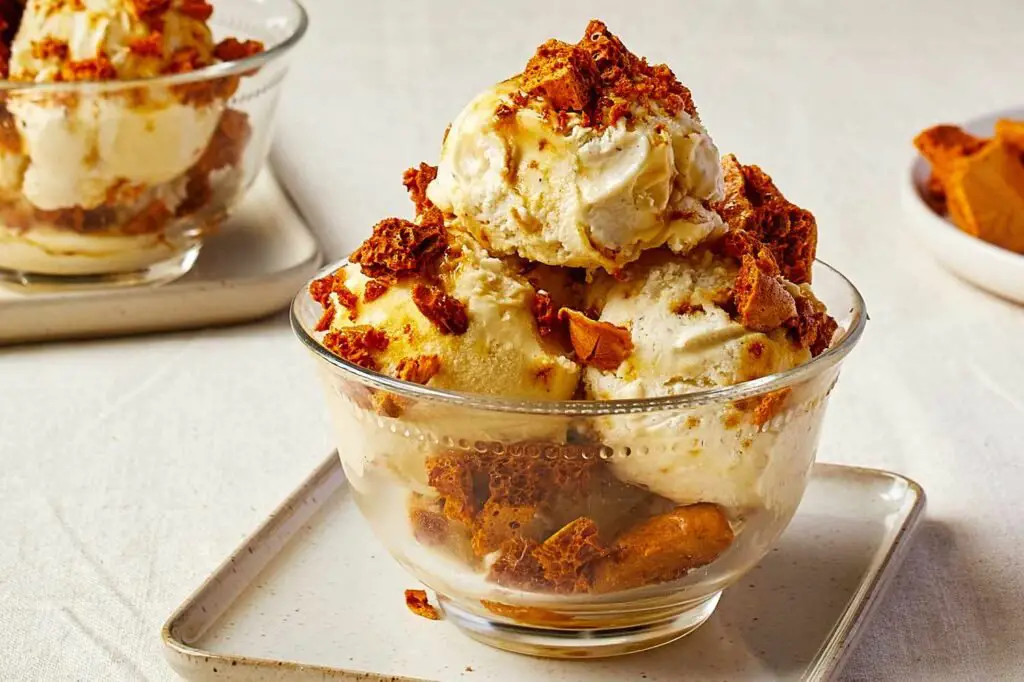
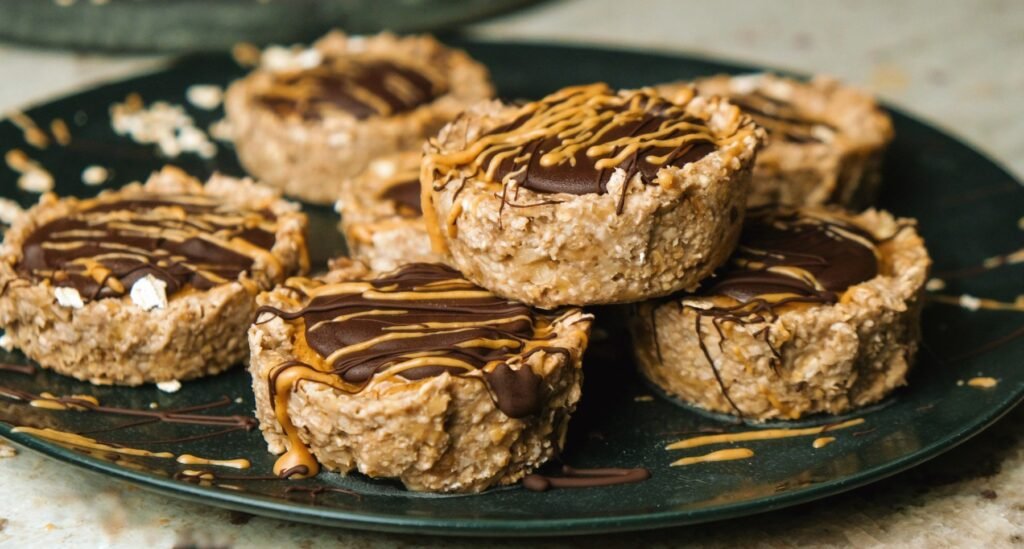

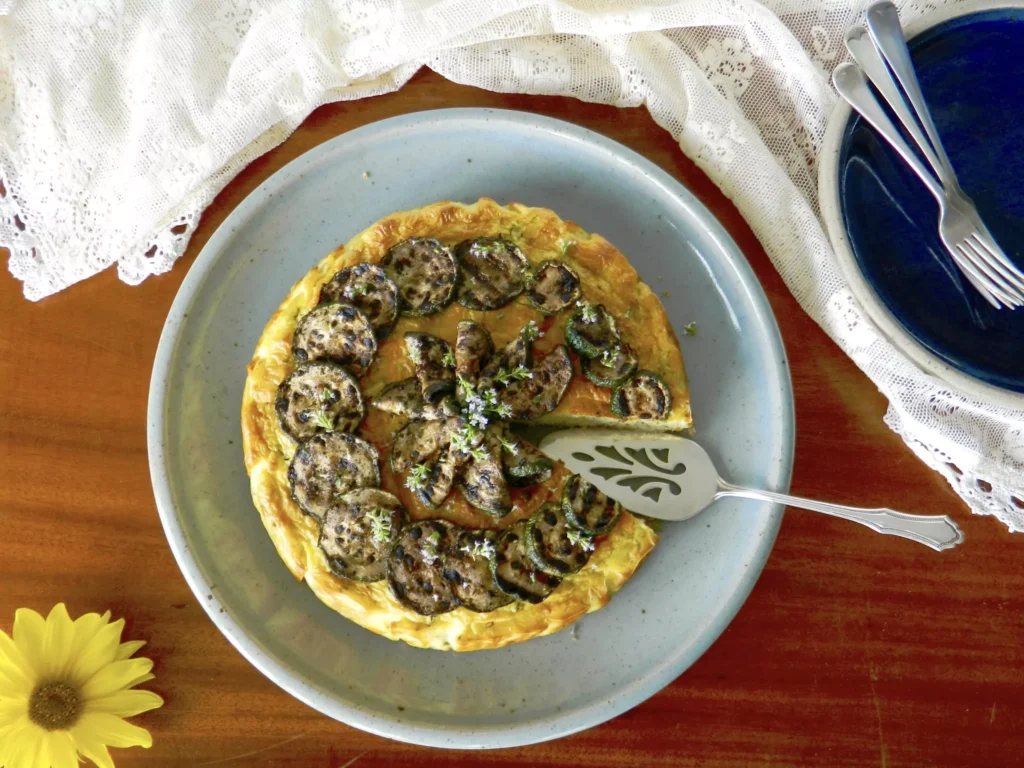
The History and the Effect It Has Had on the New Zealand Cuisine
New Zealand’s history can be divided into four main stages: the Polynesian settlement, the European exploration and colonization, the British dominion and independence, and the modern multicultural society. Each stage has had an impact on the cuisine of New Zealand, as follows:
The Polynesian settlement

The first inhabitants of New Zealand were the Māori, who arrived from eastern Polynesia around the 13th century. They brought with them several plants and animals, such as kūmara (sweet potato), taro, yam, hue (bottle gourd), tī-pore (cabbage tree), dog, and rat.
The Māori also adapted to the local environment and resources, such as fernroot, insects, moa (extinct flightless bird), and seafood. They developed a distinctive cuisine based on hāngī (earth oven), where food was cooked with hot stones and covered with leaves.
New Zealand Was Colonized
The first European to sight New Zealand was the Dutch navigator Abel Tasman in 1642, but he did not land or interact with the Māori. The first European to circumnavigate and map New Zealand was the British explorer James Cook in 1769, who also traded with the Māori and introduced some new foods, such as potatoes, pigs, and chickens.

From the late 18th century, more Europeans arrived, mainly from Britain, but also from France, Germany, and Scandinavia. They brought with them their own culinary traditions, such as fish and chips, meat pies, roast lamb, tea, and dairy products.
They also influenced the Māori cuisine, such as by introducing flour, sugar, and salt.
New Zealand became a British Dominion and ultimately Achieved Independence.
In 1840, the Treaty of Waitangi was signed between the British Crown and various Māori chiefs, making New Zealand a British colony. However, disputes over land and sovereignty led to the New Zealand Wars from 1843 to 1872, which resulted in the loss of Māori land and culture.
New Zealand became a self-governing dominion in 1907, and gradually gained more autonomy and recognition from Britain. During the World Wars, New Zealand fought alongside Britain and other allies, and also faced food rationing and shortages.
After the wars, New Zealand experienced economic and social changes, such as urbanization, industrialization, and immigration. New Zealand cuisine became more diverse and influenced by other cultures, such as American, Chinese, Indian, and Italian.
Modern New Zealand

The modern multicultural society: Since the 1970s, New Zealand has become more multicultural and cosmopolitan, with increased immigration from Asia, the Pacific islands, and other parts of the world. New Zealand cuisine has also become more varied and innovative, incorporating elements from different cuisines, such as Southeast Asian, East Asian, South Asian, Mediterranean, and Pacific Rim.
New Zealand cuisine has also developed its own identity and style, with an emphasis on fresh, local, and seasonal ingredients, and a fusion of traditional and modern techniques. Some examples of modern New Zealand dishes are pavlova (a meringue-based dessert), kiwifruit (a fuzzy green fruit), and hokey pokey ice cream (vanilla ice cream with honeycomb pieces).
New Zealand’s cuisine is a reflection of its history, culture, and identity. It showcases the diversity and creativity of its people, as well as their adaptation and resilience to their environment and circumstances.
References
How New Zealand’s Climate and Geography Has Influenced the Cuisine
New Zealand’s climate and geography have influenced its cuisine in various ways. Here are some examples:
New Zealand has a Moderate Climate
The country has a temperate maritime climate, with four distinct seasons and moderate rainfall. This means that fresh produce is available year-round, and the cuisine is based on seasonal and local ingredients.
The country is Surrounded by the Pacific Ocean

The country is surrounded by the Pacific Ocean, which provides a rich source of seafood, such as fish, shellfish, and seaweed. Seafood is a staple food in New Zealand, especially in the coastal regions and among the Māori people.
It has a Diverse Geography

The country has a diverse geography, with mountains, valleys, rivers, lakes, islands, and coasts. This creates different ecological zones and microclimates, which support a variety of flora and fauna.
The cuisine reflects the diversity and creativity of the people, who use different types of food depending on their location and elevation.
The country’s geography also influences the methods of food preparation and cooking. For example, the Māori use a traditional earth oven called hāngī, where food is cooked with hot stones and covered with leaves. This method is used to cook large quantities of food, such as meat, vegetables, and kūmara (sweet potato), for special occasions and celebrations.
What is New Zealand Cuisine?
New Zealand cuisine is a reflection of the country’s diverse cultural influences, indigenous Maori traditions, and its unique geographical location. The cuisine incorporates a variety of ingredients, including those sourced from the land and sea. Some key aspects of New Zealand cuisine include:
Maori Influence
Maori cuisine, the traditional food of the indigenous Maori people, is an integral part of New Zealand’s culinary landscape. It includes ingredients like kumara (sweet potato), taro, and seafood, cooked using traditional methods such as hangi (earth oven cooking).
Seafood
Given its island geography, New Zealand is renowned for its fresh and high-quality seafood. Green-lipped mussels, paua (abalone), crayfish, and various types of fish are commonly featured in dishes.
Lamb and Beef
New Zealand is a major producer of high-quality lamb and beef. These meats are often featured in traditional Kiwi dishes, such as lamb chops and roast lamb.
Pavlova
The pavlova is a famous dessert believed to have originated in New Zealand. It consists of a meringue base topped with whipped cream and fresh fruits, particularly kiwifruit.
Kiwi Fruit
The kiwifruit, also known simply as kiwi, is a symbol of New Zealand and is often used in both sweet and savory dishes.
Hangi
The traditional Maori method of cooking, hangi involves using heated rocks buried in a pit to steam food. This method imparts a unique flavor to dishes such as meat, vegetables, and kumara.
Feijoa
This tropical fruit is grown in New Zealand and is used in various dishes, desserts, and beverages.
Meat Pies
Savory meat pies, often filled with minced meat and various fillings, are popular as a quick and satisfying snack.
Fish and Chips
Like many Commonwealth countries, New Zealanders enjoy fish and chips, often served with a side of tomato sauce.
Wine
New Zealand has gained international recognition for its wine production, particularly its Sauvignon Blanc. The country’s wine regions, such as Marlborough, are celebrated for producing high-quality wines.
New Zealand Culinary Traditions
Culinary traditions in New Zealand are a tapestry of the old and the new. The Maori hangi feast remains a cherished tradition, particularly on special occasions like Waitangi Day.
British colonial heritage is evident in the popularity of roast meals, scones, and pavlova, a dessert that is a subject of friendly trans-Tasman rivalry with Australia.
More recent influences from Pacific Island, Asian, and European immigrants have introduced a variety of flavors and techniques, enriching the country’s culinary repertoire.
Traditional New Zealand Cuisine
New Zealand’s culinary landscape is a delightful mix of influences, combining indigenous Maori traditions, British heritage, and modern Pacific Rim flavors. Here are some key aspects of New Zealand cuisine:
Traditional New Zealand Cuisine – Kai Maori (Maori Food)

Traditional Maori dishes often include hangi, a method of cooking using heated rocks buried in the ground. It involves a mix of meats, vegetables, and sometimes seafood.
Pavlova
A beloved Kiwi dessert, pavlova is a meringue-based treat topped with whipped cream and fresh fruit.
Kiwi BBQ
New Zealanders love outdoor barbecues, featuring a range of meats, sausages, and seafood.
New Zealand Seafood

With abundant coastlines, New Zealand is known for its fresh seafood, including green-lipped mussels, crayfish, and fish like snapper and hoki.
New Zealand Lamb

New Zealand Lamb is a staple in New Zealand cuisine, prepared in various ways, from roasts to lamb chops.
Kumara (Sweet Potato)
A native crop, kumara is a sweet potato variety enjoyed in various dishes, from fries to mash.
Hokey Pokey Ice Cream
A popular New Zealand ice cream flavor, hokey pokey involves honeycomb toffee bits mixed into vanilla.
Feijoa
A unique fruit with a sweet and slightly tangy flavor, often used in desserts, drinks, and jams.
Manuka Honey
Renowned for its medicinal properties, Manuka honey is a native product with a distinctive flavor.
Hangi Pies
A modern take on traditional hangi, these savory pies contain a mix of meats, vegetables, and gravy.
Exploring New Zealand’s Ingredients: The Flavors of New Zealand Cuisine
The flavors of New Zealand cuisine are diverse, but they share a common thread of freshness and quality. Dairy products like cheese and butter are world-renowned for their purity and taste, while New Zealand lamb is a sought-after meat for its tenderness and flavor.
The country’s vineyards produce award-winning wines that complement its gastronomy, and local produce like kiwifruit, apples, and Manuka honey add a distinctly Kiwi touch to dishes.
How Healthy is New Zealand Cuisine?
New Zealand cuisine is a mix of traditional and modern influences, with a strong emphasis on fresh seafood and tropical fruits. However, New Zealand also faces some health challenges related to its food choices and availability. Here are some of the health benefits and risks of New Zealand cuisine:
Benefits of New Zealand Cuisine
New Zealand cuisine is based on seasonal and local ingredients, which provide freshness, variety, and nutrition. Seafood is a staple food in New Zealand, especially in the coastal regions and among the Māori people.
Seafood is rich in protein, omega-3 fatty acids, and minerals, which can support cardiovascular health, brain function, and immune system. Fruits are also abundant in New Zealand, such as kiwifruit, apples, pears, and berries.
Fruits are high in antioxidants, vitamins, and fiber, which can prevent oxidative stress, inflammation, and chronic diseases.
Risks of New Zealand Cuisine
New Zealand has one of the highest rates of obesity and non-communicable diseases (NCDs) in the world, such as diabetes, high blood pressure, and heart disease. This is partly due to the consumption of imported foods that are high in fat, salt, and sugar, such as corned beef, mutton flaps, and soft drinks.
These foods are often cheaper and more accessible than local fresh foods, especially in urban areas. New Zealand also suffers from micronutrient deficiencies, such as iron, vitamin A, and iodine, which can affect the growth and development of children and the health of women.
This is partly due to the low intake of fruits and vegetables, which are rich in vitamins and minerals, and the reliance on staple foods, such as taro, cassava, and breadfruit, which are low in micronutrients.
References
What are some healthy New Zealand dishes?
New Zealand cuisine is based on seasonal and local ingredients, which provide freshness, variety, and nutrition. Seafood is a staple food in New Zealand, especially in the coastal regions and among the Māori people. Fruits are also abundant in New Zealand, such as kiwifruit, apples, pears, and berries. Here are some healthy New Zealand dishes that you can try:
- Ginger salmon poke-style bowl with spicy sesame avocado: This dish is a Hawaiian-inspired poke bowl that features fresh salmon, avocado, rice, and vegetables, tossed with a ginger and sesame dressing. It is gluten-free and dairy-free, and rich in protein, omega-3 fatty acids, and antioxidants.
- Zoodles (zucchini noodles) with garlic, chilli and seafood: This dish is a low-carb and gluten-free alternative to pasta, where zucchini is spiralised into noodles and served with garlic, chilli, canned salmon and shrimp. It is a quick and easy meal that is high in protein, fiber, and vitamin C.
- Meatballs with courgette spaghetti: This dish is another low-carb and gluten-free alternative to pasta, where courgette is cut into spaghetti-like strands and served with meatballs and tomato sauce. It is a simple and tasty dish that is high in protein, iron, and vitamin A.
These are just some examples of healthy New Zealand dishes that you can enjoy.
References
New Zealand Cuisine Recipes to Try at Home
New Zealand cuisine is an exciting exploration of flavors, where traditional Maori cooking meets the influences of European settlers and the freshness of the Pacific.
It’s a cuisine that celebrates the bountiful produce and the cultural melting pot that is New Zealand.
New Zealand Cuisine – Whitebait Fritters
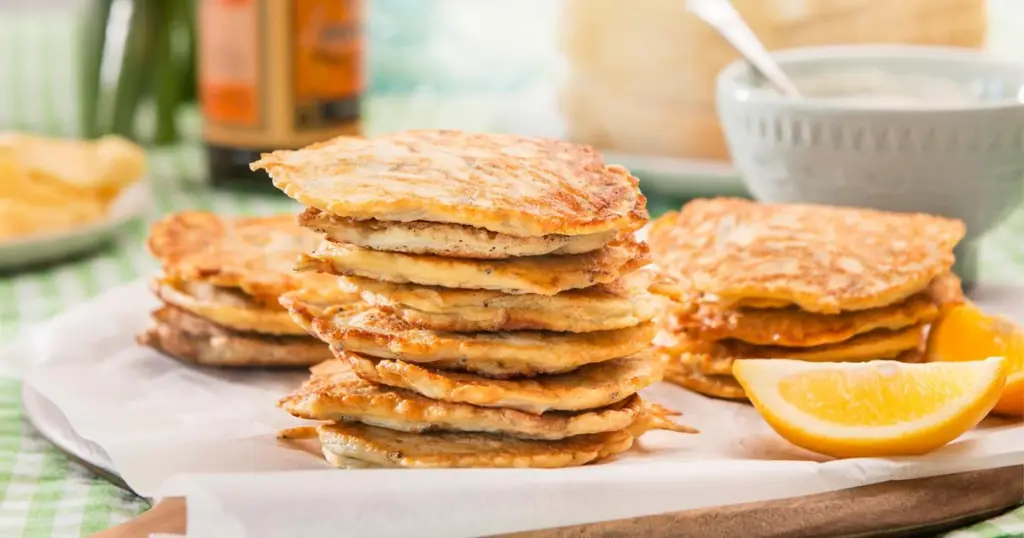
Whitebait fritters are a cherished springtime delicacy in New Zealand, traditionally made with the tiny, translucent fish found in local rivers.
Ingredients for Whitebait Fritters
- Fresh whitebait
- Eggs
- Flour
- Butter
- Lemon wedges
- Salt and pepper
How to Prepare Whitebait Fritters
- Gently mix the whitebait with beaten eggs, a touch of flour, and seasoning.
- Heat butter in a pan and spoon in the mixture to form small fritters.
- Cook until golden and serve immediately with a squeeze of lemon.
These fritters are best presented simply, allowing the delicate flavor of the whitebait to shine, accompanied by fresh lemon wedges on the side.
A crisp, chilled Sauvignon Blanc pairs beautifully with the fritters, complementing their light, oceanic flavor.
New Zealand Cuisine – Kumara and Coconut Soup
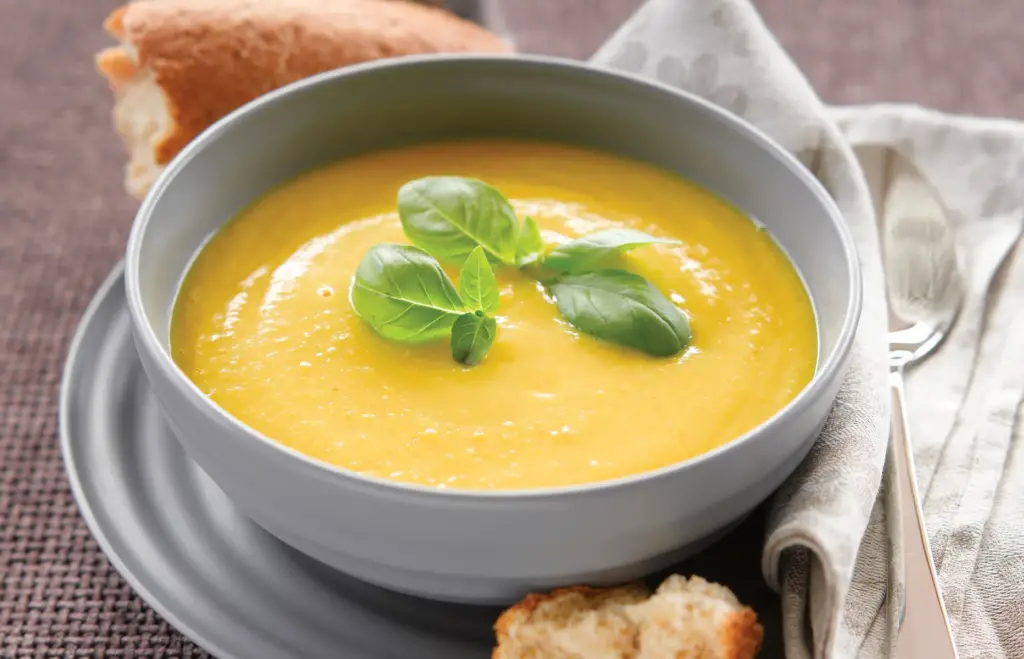
Kumara soup, enriched with the creaminess of coconut, is a warm, comforting starter with roots in both Maori and Pacific Islander cuisine.
Ingredients for Kumara and Coconut Soup
- Kumara (sweet potatoes)
- Coconut milk
- Onion
- Garlic
- Vegetable stock
- Olive oil
- Spices (cumin, coriander)
- Salt and pepper
How to Prepare Kumara and Coconut Soup
- Sauté onions and garlic in olive oil until translucent.
- Add diced kumara, spices, and stock, and simmer until tender.
- Blend until smooth, stir in coconut milk, and heat through.
Serve this soup in a deep bowl, garnished with a swirl of coconut milk and fresh coriander. It’s a dish that warms the soul and introduces the palate to the flavors of New Zealand.
A light Riesling or a fruity Pinot Noir can complement the sweet and savory notes of the soup.
New Zealand Cuisine – Roast Lamb with Mint Sauce
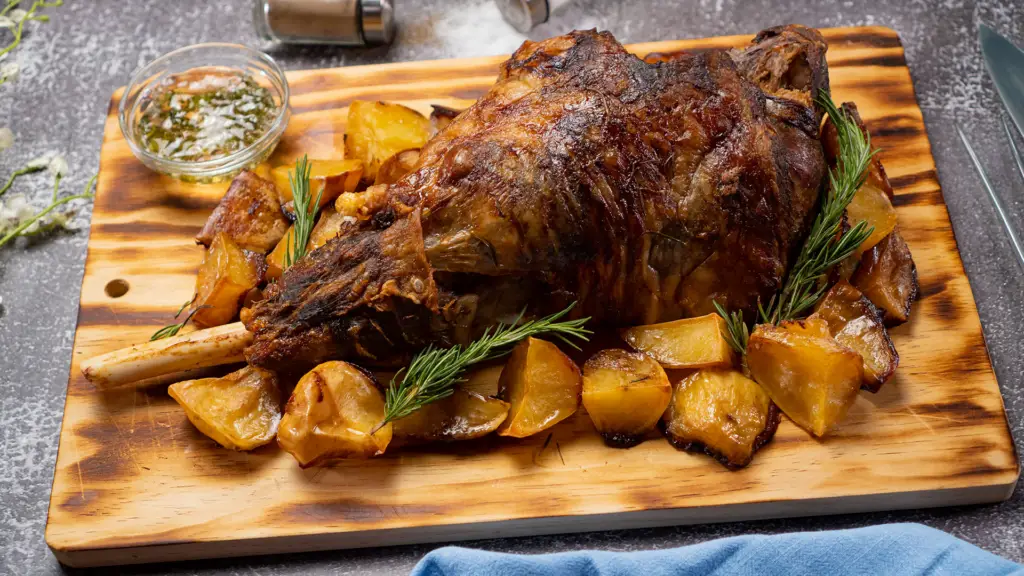
Roast lamb is a Sunday dinner staple, often served with a homemade mint sauce that cuts through the richness of the meat.
New Zealand Cuisine – Ingredients for Roast Lamb with Mint Sauce
- Leg of lamb
- Fresh mint
- Sugar
- White vinegar
- Potatoes
- Rosemary
- Olive oil
- Salt and pepper
New Zealand Cuisine – How to Prepare Roast Lamb with Mint Sauce
- Rub the lamb with olive oil, rosemary, salt, and pepper, and roast until your desired doneness.
- For the mint sauce, combine chopped mint, sugar, and vinegar, adjusting to taste.
- Serve the lamb sliced, with the mint sauce on the side.
Present the lamb on a platter, garnished with rosemary and accompanied by roast potatoes for a traditional Kiwi meal.
A robust Merlot or a full-bodied Pinot Noir pairs well with the lamb, enhancing its savory depth.
New Zealand Cuisine – Fish and Chips

Fish and chips, a British classic adopted by New Zealanders, is often made with local catch like snapper, hoki, or tarakihi.
New Zealand Cuisine – Ingredients for Fish and Chips
- Fresh white fish fillets
- Potatoes
- Flour
- Beer (for batter)
- Salt and vinegar
- Oil for frying
New Zealand Cuisine – How to Prepare Fish and Chips
- Coat fish fillets in a beer batter and deep-fry until golden and crispy.
- Fry sliced potatoes until they are golden brown and crisp.
- Serve with a sprinkle of salt and a dash of vinegar.
Fish and chips are best served in a casual setting, wrapped in paper with a side of tartare sauce and a wedge of lemon.
A cold lager or a sparkling cider are the perfect accompaniments, cutting through the richness of the fried food.
New Zealand Recipes – Meat Pies

History and Background of New Zealand Meat Pies
New Zealand Meat Pies are a beloved culinary tradition deeply rooted in the country’s history. Originating from British influence, these savory pies have become a staple in New Zealand’s food culture.
Whether enjoyed as a quick snack or a hearty meal, the New Zealand Meat Pie encapsulates the Kiwi way of life, reflecting the nation’s love for comfort food and a diverse culinary heritage.
Ingredients for New Zealand Meat Pies
- 1 lb ground beef or lamb
- 1 onion, finely chopped
- 2 cloves garlic, minced
- 2 tablespoons tomato paste
- 1 cup beef or vegetable broth
- 1 tablespoon Worcestershire sauce
- 1 tablespoon all-purpose flour
- 1 teaspoon dried thyme
- Salt and pepper to taste
- 2 sheets puff pastry, thawed
- 1 egg, beaten (for egg wash)
Estimated Cooking Time: 45 minutes
Servings: 4
Recipe for New Zealand Meat Pies
1. Prepare Filling
- In a skillet over medium heat, brown the ground beef or lamb.
- Add chopped onions and minced garlic, sautéing until onions are translucent.
- Stir in tomato paste, Worcestershire sauce, and dried thyme.
2. Create Gravy
- Sprinkle flour over the meat mixture, stirring well to combine.
- Gradually add beef or vegetable broth, allowing the mixture to thicken into a savory gravy.
- Season with salt and pepper to taste.
3. Assemble Pies
- Preheat the oven to 375°F (190°C).
- Roll out the thawed puff pastry sheets on a floured surface.
- Cut circles from the pastry sheets, using a round template or a bowl.
4. Fill and Seal
- Place a spoonful of the meat filling onto one half of each pastry circle.
- Fold the other half over the filling, creating a semi-circle shape.
- Use a fork to crimp the edges, sealing the pies.
5. Egg Wash and Bake
- Brush the tops of the pies with beaten egg to create a golden finish.
- Place the pies on a baking sheet and bake in the preheated oven for 20-25 minutes or until the pastry is puffed and golden.
6. Serve and Enjoy
- Allow the Meat Pies to cool for a few minutes before serving.
- Enjoy the warm and comforting flavors of New Zealand with these delightful Meat Pies.
Calories per Serving: Approximately 450 calories
New Zealand Meat Pies are a delicious embodiment of Kiwi comfort food, showcasing the perfect blend of savory meat filling encased in flaky pastry. This recipe captures the essence of New Zealand’s culinary heritage and is sure to be a hit with anyone craving a taste of Kiwi goodness.
New Zealand Recipes – New Zealand Lamb

History and Background of New Zealand Lamb
New Zealand Lamb has earned international acclaim for its exceptional quality and flavor. The country’s lush pastures and temperate climate provide an ideal environment for raising sheep, making lamb a staple in New Zealand cuisine.
With a history deeply rooted in the agricultural practices of the region, New Zealand Lamb reflects the pastoral traditions of the country and its commitment to sustainable farming.
Ingredients for New Zealand Lamb
- 2 lbs lamb chops or lamb leg roast
- 2 tablespoons olive oil
- 3 cloves garlic, minced
- 1 tablespoon fresh rosemary, chopped
- 1 tablespoon fresh thyme, chopped
- Salt and pepper to taste
- 1 lemon, sliced (for garnish)
- Fresh mint leaves (for garnish)
Estimated Cooking Time: 30 minutes
Servings: 4
Recipe for New Zealand Lamb
1. Prepare the Lamb
- If using lamb chops, ensure they are at room temperature before cooking.
- If using a lamb leg roast, preheat the oven to 375°F (190°C).
2. Season the Lamb
- In a small bowl, mix together olive oil, minced garlic, chopped rosemary, chopped thyme, salt, and pepper.
- Rub the mixture over the lamb chops or lamb leg roast, ensuring an even coating.
3. Grill or Roast
For Lamb Chops:
- Preheat the grill to medium-high heat.
- Grill the lamb chops for approximately 4-5 minutes per side or until desired doneness.
For Lamb Leg Roast:
- Place the lamb leg roast on a roasting pan.
- Roast in the preheated oven for about 25-30 minutes for medium-rare, adjusting the time for your preferred level of doneness.
4. Rest and Garnish
- Allow the grilled lamb chops or roasted lamb leg to rest for a few minutes before serving.
- Garnish with lemon slices and fresh mint leaves for added freshness.
5. Serve and Enjoy
- Serve the New Zealand Lamb hot, appreciating the succulent and flavorful meat.
- Pair with your favorite sides, such as roasted vegetables or mashed potatoes.
Calories per Serving: Approximately 350 calories
New Zealand Lamb, celebrated for its tenderness and exquisite taste, pays homage to the country’s agricultural heritage. This simple yet flavorful recipe allows the quality of the lamb to shine, providing a delightful dining experience that captures the essence of New Zealand’s culinary excellence.
New Zealand Recipes – Kiwi BBQ

History and Background of New Zealand Kiwi BBQ
The Kiwi BBQ holds a special place in New Zealand’s culinary culture, often seen as a symbol of outdoor gatherings and laid-back Kiwi lifestyle. Rooted in the tradition of barbecuing, this recipe reflects the country’s love for fresh and locally sourced ingredients, as well as the vibrant social culture that revolves around shared meals outdoors.
Whether it’s a casual family get-together or a community event, the Kiwi BBQ brings people together to savor the flavors of New Zealand.
Ingredients for New Zealand Kiwi BBQ
- 2 lbs beef or lamb skewers
- 2 bell peppers, cut into chunks
- 1 red onion, cut into wedges
- 1 pineapple, peeled and cut into chunks
- 1 cup cherry tomatoes
- 1/4 cup olive oil
- 2 tablespoons soy sauce
- 2 tablespoons honey
- 2 cloves garlic, minced
- 1 teaspoon dried thyme
- Salt and pepper to taste
- Wooden skewers, soaked in water
Estimated Cooking Time: 20 minutes
Servings: 4
Recipe for New Zealand Kiwi BBQ
1. Prepare Skewers
- If using wooden skewers, soak them in water to prevent burning during grilling.
- Thread the beef or lamb, bell peppers, red onion, pineapple, and cherry tomatoes onto the skewers, creating colorful and flavorful combinations.
2. Create Marinade
- In a bowl, whisk together olive oil, soy sauce, honey, minced garlic, dried thyme, salt, and pepper.
- Brush the marinade generously over the skewers, ensuring they are well-coated. Allow them to marinate for at least 15 minutes.
3. Preheat the Grill
- Preheat the grill to medium-high heat.
- Oil the grill grates to prevent sticking.
4. Grill the Skewers
- Place the skewers on the preheated grill, cooking for about 10 minutes, turning occasionally.
- Grill until the meat is cooked to your desired doneness and the vegetables have a nice char.
5. Serve and Enjoy
- Remove the skewers from the grill and let them rest for a few minutes.
- Serve the Kiwi BBQ skewers hot, allowing everyone to savor the delicious mix of flavors.
Calories per Serving: Approximately 380 calories
The New Zealand Kiwi BBQ is a celebration of both the country’s love for barbecuing and the abundance of fresh produce. With its colorful presentation and mouthwatering taste, this dish captures the essence of outdoor gatherings in New Zealand, making it a delightful experience for family and friends alike.
New Zealand Recipes – Crunchy Maple Baked Kumara Chips (Sweet Potato)

History and Background of Crunchy Maple Baked Kumara Chips
Crunchy Maple Baked Kumara Chips showcase the fusion of New Zealand’s love for kumara (sweet potato) with a touch of sweetness and crispiness. Originating from the Maori introduction of kumara to the region, this contemporary recipe reflects the innovative spirit of New Zealand’s culinary scene.
Baked to perfection with a maple glaze, these kumara chips offer a delightful balance of flavors that celebrate both tradition and modern taste.
Ingredients for Crunchy Maple Baked Kumara Chips
- 3 medium-sized kumara (sweet potatoes)
- 2 tablespoons olive oil
- 2 tablespoons pure maple syrup
- 1 teaspoon cinnamon
- 1/2 teaspoon salt
- 1/4 teaspoon black pepper
Estimated Cooking Time: 30 minutes
Servings: 4
Recipe for Crunchy Maple Baked Kumara Chips
1. Prepare the Kumara
- Preheat the oven to 400°F (200°C).
- Wash and scrub the kumara thoroughly. Leave the skin on for added texture.
- Cut the kumara into thin, uniform slices resembling chips.
2. Create the Maple Glaze
- In a bowl, whisk together olive oil, maple syrup, cinnamon, salt, and black pepper.
- Toss the kumara slices in the maple glaze, ensuring each chip is evenly coated.
3. Arrange on Baking Sheet
- Line a baking sheet with parchment paper for easy cleanup.
- Arrange the maple-coated kumara slices on the baking sheet in a single layer, preventing overcrowding.
4. Bake to Crispy Perfection
- Bake in the preheated oven for approximately 20-25 minutes, flipping the chips halfway through the cooking time.
- Keep an eye on them to prevent burning; the chips should be golden brown and crispy when done.
5. Cool and Serve
- Once baked, let the kumara chips cool for a few minutes on the baking sheet.
- Transfer to a serving dish, allowing them to crisp up further as they cool.
- Serve the Crunchy Maple Baked Kumara Chips as a delightful and flavorful snack or a unique side dish.
Calories per Serving: Approximately 160 calories
These Crunchy Maple Baked Kumara Chips offer a delightful twist on the classic kumara, embodying the spirit of modern Kiwi cuisine. The maple glaze adds a touch of sweetness to the crispy chips, creating a snack that’s not only delicious but also a testament to New Zealand’s culinary innovation.
New Zealand Recipes – Ginger salmon poke-style bowl with spicy sesame avocado

History and Background of Ginger Salmon Poke-Style Bowl with Spicy Sesame Avocado
The Ginger Salmon Poke-Style Bowl with Spicy Sesame Avocado is a contemporary dish that combines New Zealand’s love for fresh seafood with the global trend of poke bowls. While poke originated in Hawaii, New Zealand’s rich marine resources have allowed chefs to create their own unique versions.
This recipe showcases the fusion of flavors, featuring ginger-marinated salmon, vibrant vegetables, and a spicy sesame avocado that reflects the diversity and creativity of modern Kiwi cuisine.
Ingredients for Ginger Salmon Poke-Style Bowl with Spicy Sesame Avocado
- 1 lb fresh salmon, sushi-grade, cubed
- 2 tablespoons soy sauce
- 1 tablespoon sesame oil
- 1 tablespoon fresh ginger, grated
- 2 cups cooked sushi rice, cooled
- 1 avocado, sliced
- 1 cucumber, thinly sliced
- 1 carrot, julienned
- 1 radish, thinly sliced
- 1 scallion, chopped
- 1 tablespoon sesame seeds
- 1 tablespoon sriracha sauce (optional, for extra spice)
- Fresh cilantro leaves (for garnish)
Estimated Cooking Time: 20 minutes
Servings: 4
Recipe for Ginger Salmon Poke-Style Bowl with Spicy Sesame Avocado
1. Marinate Salmon
- In a bowl, combine cubed salmon with soy sauce, sesame oil, and grated ginger.
- Let the salmon marinate for at least 15 minutes to allow the flavors to infuse.
2. Prepare Sushi Rice
- Cook sushi rice according to package instructions.
- Allow the rice to cool before assembling the bowl.
3. Arrange Bowl Components
- In serving bowls, place a generous portion of cooled sushi rice as the base.
- Top the rice with marinated salmon cubes, creating a visually appealing arrangement.
4. Add Fresh Vegetables
- Distribute avocado slices, cucumber, julienned carrot, radish, and chopped scallion around the bowl.
- Create a balanced and colorful presentation with the various fresh ingredients.
5. Drizzle with Spicy Sesame Avocado
- Mash one avocado and mix it with sesame seeds.
- Optionally, add sriracha sauce for a spicy kick.
- Drizzle the spicy sesame avocado mixture over the bowl, creating a creamy and flavorful dressing.
6. Garnish and Serve
- Garnish the bowl with fresh cilantro leaves for a burst of herbaceous aroma.
- Serve the Ginger Salmon Poke-Style Bowl with Spicy Sesame Avocado immediately to enjoy the vibrant flavors and textures.
Calories per Serving: Approximately 450 calories
This Ginger Salmon Poke-Style Bowl with Spicy Sesame Avocado is a delightful nod to the fusion of culinary influences in contemporary New Zealand. With its focus on fresh, high-quality ingredients and bold flavors, this dish exemplifies the modern Kiwi approach to creating unique and satisfying meals.
New Zealand Recipes – Zoodles (zucchini noodles) with garlic, chilli and seafood

History and Background of Zoodles (Zucchini Noodles) with Garlic, Chilli, and Seafood
Zoodles with Garlic, Chilli, and Seafood is a contemporary dish that exemplifies New Zealand’s commitment to fresh, healthy ingredients and innovative cooking. Originating from the global trend of using vegetable noodles, or “zoodles,” this recipe brings a Kiwi twist by incorporating local seafood and flavors.
With a perfect blend of zesty garlic, spicy chilli, and succulent seafood, this dish captures the essence of modern New Zealand cuisine.
Ingredients for Zoodles with Garlic, Chilli, and Seafood
- 4 medium-sized zucchini, spiralized into noodles (zoodles)
- 1 lb mixed seafood (shrimp, calamari, mussels, etc.)
- 3 tablespoons olive oil
- 4 cloves garlic, minced
- 1 red chilli, finely chopped
- 1 cup cherry tomatoes, halved
- Juice of 1 lemon
- Salt and black pepper to taste
- Fresh parsley, chopped (for garnish)
- Grated Parmesan cheese (optional, for serving)
Estimated Cooking Time: 20 minutes
Servings: 4
Recipe for Zoodles with Garlic, Chilli, and Seafood
1. Prepare Zoodles
- Spiralize the zucchini into noodle shapes using a spiralizer.
- Set the zoodles aside on a paper towel to absorb excess moisture.
2. Cook Seafood
- In a large skillet, heat 2 tablespoons of olive oil over medium-high heat.
- Add the mixed seafood to the skillet and cook until they are opaque and cooked through.
3. Sauté Garlic and Chilli
- Push the cooked seafood to one side of the skillet and add the remaining olive oil.
- Sauté minced garlic and chopped chilli until fragrant, being careful not to burn them.
4. Combine Zoodles and Tomatoes
- Toss the zucchini noodles into the skillet, coating them with the garlic and chilli.
- Add the halved cherry tomatoes, stirring to combine.
5. Finish with Lemon Juice
- Squeeze the juice of one lemon over the zoodle mixture, adding a zesty kick.
- Season with salt and black pepper to taste, adjusting as needed.
6. Garnish and Serve
- Fold the cooked seafood back into the zoodles, ensuring an even distribution.
- Garnish with chopped fresh parsley and, if desired, serve with a sprinkle of grated Parmesan cheese.
Calories per Serving: Approximately 250 calories
Zoodles with Garlic, Chilli, and Seafood is a delightful, low-carb alternative that reflects the vibrant and health-conscious spirit of contemporary New Zealand cooking. Bursting with flavors and textures, this dish is not only satisfying but also a testament to the diversity and innovation found in Kiwi cuisine.
New Zealand Recipes – Meatballs with courgette spaghetti

History and Background of Meatballs with Courgette Spaghetti
Meatballs with Courgette Spaghetti is a modern Kiwi twist on a classic dish, showcasing New Zealand’s love for fresh produce and inventive recipes. Drawing inspiration from both Italian cuisine and the abundance of local ingredients, this dish reflects the diverse cultural influences that shape New Zealand’s culinary landscape.
The marriage of flavorful meatballs with the light and refreshing taste of courgette (zucchini) spaghetti highlights the country’s commitment to creative and health-conscious cooking.
Ingredients for Meatballs with Courgette Spaghetti
For Meatballs:
- 1 lb ground beef or lamb
- 1/2 cup breadcrumbs
- 1/4 cup grated Parmesan cheese
- 1 egg
- 2 cloves garlic, minced
- 1 teaspoon dried oregano
- Salt and black pepper to taste
- 2 tablespoons olive oil (for cooking)
Courgette Spaghetti:
- 4 medium courgettes (zucchini), spiralized into noodles
- 2 tablespoons olive oil
- 2 cloves garlic, minced
- 1/2 teaspoon red pepper flakes (optional, for spice)
- Salt and black pepper to taste
Estimated Cooking Time: 30 minutes
Servings: 4
Recipe for Meatballs with Courgette Spaghetti
1. Prepare Meatballs
- In a bowl, combine ground meat, breadcrumbs, Parmesan cheese, egg, minced garlic, dried oregano, salt, and black pepper.
- Mix the ingredients thoroughly and shape into meatballs of uniform size.
2. Cook Meatballs
- Heat olive oil in a skillet over medium-high heat.
- Cook the meatballs until browned on all sides and cooked through, approximately 15-20 minutes.
3. Make Courgette Spaghetti
- In a separate pan, heat olive oil over medium heat.
- Add minced garlic and red pepper flakes (if using), sautéing for a minute until fragrant.
- Add the spiralized courgette noodles, tossing them in the pan until just tender.
- Season with salt and black pepper.
4. Serve
- Plate the courgette spaghetti and top with the cooked meatballs.
- Optionally, garnish with additional Parmesan cheese and fresh herbs.
5. Enjoy
- Serve the Meatballs with Courgette Spaghetti hot, savoring the combination of flavorful meatballs and the light, vegetable-based noodles.
Calories per Serving: Approximately 400 calories
Meatballs with Courgette Spaghetti is a delicious representation of New Zealand’s commitment to crafting innovative and nutritious dishes. This recipe, with its blend of traditional flavors and contemporary techniques, reflects the evolving culinary landscape of modern Kiwi cuisine.
New Zealand Vegetarian Recipes – Vegetarian Chocolate Brownies

History and Background of Vegetarian Chocolate Brownies
Vegetarian Chocolate Brownies, a delectable dessert enjoyed across New Zealand, embody the country’s love for rich, indulgent treats. While the origins of brownies trace back to the United States, New Zealanders have embraced and personalized this classic dessert.
Vegan Chocolate Brownies showcase a perfect fusion of local ingredients and international flavors, offering a delightful experience for those seeking a plant-based indulgence in the Kiwi culinary landscape.
Ingredients for Vegetarian Chocolate Brownies
- 1 cup all-purpose flour
- 1/2 cup unsweetened cocoa powder
- 1/2 cup vegetable oil
- 1 cup granulated sugar
- 2 teaspoons vanilla extract
- 1/4 teaspoon baking powder
- 1/4 teaspoon salt
- 1/2 cup chopped nuts (optional)
- Powdered sugar for dusting (optional)
Estimated Cooking Time: 30 minutes
Servings: 12
Recipe for Vegan Chocolate Brownies
1. Preheat the Oven
- Preheat your oven to 350°F (175°C).
- Grease and line a square baking pan with parchment paper.
2. Combine Dry Ingredients
- In a bowl, whisk together the flour, cocoa powder, baking powder, and salt until well combined.
3. Mix Wet Ingredients
- In a separate bowl, mix together the vegetable oil, granulated sugar, and vanilla extract until the sugar is dissolved.
4. Combine Wet and Dry Ingredients
- Gradually add the dry ingredients to the wet ingredients, stirring until just combined. Avoid overmixing to maintain a fudgy texture.
- Fold in the chopped nuts if desired.
5. Bake
- Pour the brownie batter into the prepared baking pan, spreading it evenly.
- Bake in the preheated oven for approximately 20-25 minutes or until a toothpick inserted in the center comes out with moist crumbs.
6. Cool and Slice
- Allow the brownies to cool completely in the pan on a wire rack.
- Once cooled, lift the brownies using the parchment paper and place them on a cutting board.
- Cut into squares or rectangles to serve.
7. Dust with Powdered Sugar (Optional)
- For added sweetness, dust the cooled brownies with powdered sugar before serving.
Calories per Serving: Approximately 200 calories
Vegetarian Chocolate Brownies offer a plant-based twist on a classic favorite, showcasing New Zealand’s adaptability and creativity in the kitchen. These indulgent treats are perfect for satisfying chocolate cravings and catering to a diverse range of dietary preferences.
New Zealand Vegetarian Recipes – Vegetarian Oaty Peanut Butter Cups

History and Background of Oaty Peanut Butter Cups
Oaty Peanut Butter Cups bring a delicious twist to New Zealand’s culinary landscape, combining the rich and creamy goodness of peanut butter with the wholesome texture of oats. While influenced by the popular American peanut butter cups, this Kiwi Vegetarian variation adds a unique touch by incorporating oats for a heartier and more satisfying treat.
These cups exemplify New Zealand’s penchant for creative flavors and wholesome ingredients, making them a delightful snack enjoyed across the country.
Ingredients for Oaty Peanut Butter Cups
- 1 cup old-fashioned oats
- 1/2 cup peanut butter (smooth or crunchy)
- 1/4 cup honey or maple syrup
- 1/4 cup coconut oil, melted
- 1/2 teaspoon vanilla extract
- A pinch of salt
- 1/2 cup dark chocolate chips or chopped dark chocolate
Estimated Cooking Time: 20 minutes (plus chilling time)
Servings: 12 cups
Recipe for Oaty Peanut Butter Cups
1. Prepare Oat Base
- In a mixing bowl, combine old-fashioned oats, peanut butter, honey or maple syrup, melted coconut oil, vanilla extract, and a pinch of salt.
- Mix the ingredients thoroughly until well combined, forming a cohesive mixture.
2. Line Muffin Tin
- Line a muffin tin with paper or silicone cupcake liners.
- Divide the oat mixture evenly among the cupcake liners, pressing it down firmly to form the base layer.
3. Melt Chocolate
- In a microwave-safe bowl or using a double boiler, melt the dark chocolate chips or chopped dark chocolate until smooth.
4. Layer with Chocolate
- Spoon a layer of melted chocolate over the oat base in each cup, ensuring an even coating.
- Tap the muffin tin gently on the counter to level the chocolate layer.
5. Chill
- Place the muffin tin in the refrigerator and chill for at least 2 hours, allowing the chocolate to set.
6. Serve and Enjoy
- Once the Oaty Peanut Butter Cups are firm, remove them from the muffin tin.
- Serve and enjoy this delightful blend of oats, peanut butter, and chocolate.
Calories per Serving: Approximately 180 calories
Oaty Peanut Butter Cups offer a satisfying and nutritious treat that encapsulates the Kiwi love for wholesome ingredients. Whether enjoyed as an afternoon pick-me-up or a guilt-free dessert, these cups showcase New Zealand’s culinary innovation with a delightful twist on a classic favorite.
New Zealand Vegetarian Recipes – Roast Veggies with Crispy Chickpeas, Roasted Nuts & Tahini Mayo

History and Background of Roast Veggies with Crispy Chickpeas, Roasted Nuts & Tahini Mayo
Roast Veggies with Crispy Chickpeas, Roasted Nuts & Tahini Mayo is a flavorful and wholesome dish that embodies the diverse and fresh culinary offerings of New Zealand. Inspired by the country’s emphasis on locally sourced produce, this recipe celebrates the vibrant colors and robust flavors of a variety of roasted vegetables.
The addition of crispy chickpeas, roasted nuts, and tahini mayo elevates this dish, reflecting the Kiwi passion for innovative and nourishing meals.
Ingredients for Roast Veggies with Crispy Chickpeas, Roasted Nuts & Tahini Mayo
Roast Veggies:
- 2 cups pumpkin, diced
- 2 cups sweet potatoes, diced
- 2 cups Brussels sprouts, halved
- 1 red onion, sliced
- 2 tablespoons olive oil
- Salt and black pepper to taste
- 1 teaspoon dried thyme (optional)
Crispy Chickpeas:
- 1 can (15 oz) chickpeas, drained and rinsed
- 1 tablespoon olive oil
- 1 teaspoon ground cumin
- 1 teaspoon smoked paprika
- Salt to taste
Roasted Nuts:
- 1/2 cup mixed nuts (almonds, walnuts, or pecans)
- 1 tablespoon maple syrup
- 1/2 teaspoon ground cinnamon
- A pinch of salt
Tahini Mayo:
- 1/4 cup tahini
- 2 tablespoons mayonnaise
- 1 tablespoon lemon juice
- 1 clove garlic, minced
- Salt and black pepper to taste
Estimated Cooking Time: 40 minutes
Servings: 4
Recipe for Roast Veggies with Crispy Chickpeas, Roasted Nuts & Tahini Mayo
1. Roast Veggies
- Preheat the oven to 400°F (200°C).
- In a large mixing bowl, toss diced pumpkin, sweet potatoes, halved Brussels sprouts, and sliced red onion with olive oil, salt, black pepper, and dried thyme.
- Spread the vegetables evenly on a baking sheet and roast for 25-30 minutes or until they are tender and slightly caramelized.
2. Prepare Crispy Chickpeas
- In a separate bowl, toss chickpeas with olive oil, ground cumin, smoked paprika, and salt.
- Spread the chickpeas on a separate baking sheet and roast in the oven for 15-20 minutes or until crispy.
3. Roast Nuts
- In a small bowl, mix mixed nuts with maple syrup, ground cinnamon, and a pinch of salt.
- Spread the nuts on a lined baking sheet and roast in the oven for 10-12 minutes, stirring halfway through.
4. Make Tahini Mayo
- In a bowl, whisk together tahini, mayonnaise, lemon juice, minced garlic, salt, and black pepper until smooth.
5. Assemble and Serve
- Arrange the roasted veggies on a serving platter.
- Top with crispy chickpeas and roasted nuts.
- Drizzle the Tahini Mayo over the dish.
- Serve immediately and enjoy the medley of flavors and textures.
Calories per Serving: Approximately 350 calories
Roast Veggies with Crispy Chickpeas, Roasted Nuts & Tahini Mayo exemplifies the Kiwi commitment to fresh, flavorful, and nourishing meals. This dish offers a delightful combination of roasted vegetables, crunchy chickpeas, and a creamy tahini mayo, providing a wholesome dining experience that mirrors the diverse and vibrant culinary scene in New Zealand.
New Zealand Vegetarian Recipes – Braised Veggie Meat with Potato au Gratin

History and Background of Braised Veggie Meat with Potato au Gratin
Braised Veggie Meat with Potato au Gratin is a hearty and flavorsome vegetarian dish that reflects New Zealand’s commitment to diverse and sustainable cuisine. Rooted in the country’s appreciation for fresh produce, this recipe transforms vegetarian ingredients into a satisfying and savory meal.
The combination of braised veggie meat and creamy potato au gratin pays homage to New Zealand’s culinary innovation, catering to a range of dietary preferences with a delightful twist on classic flavors.
Ingredients for Braised Veggie Meat with Potato au Gratin
Braised Veggie Meat:
- 1 package (about 12 oz) vegetarian meat substitute (e.g., plant-based ground meat)
- 1 tablespoon olive oil
- 1 onion, finely chopped
- 2 carrots, diced
- 2 celery stalks, diced
- 2 cloves garlic, minced
- 1 can (14 oz) diced tomatoes
- 1 cup vegetable broth
- 1 teaspoon dried thyme
- Salt and black pepper to taste
- Fresh parsley for garnish
Potato au Gratin:
- 4 large potatoes, peeled and thinly sliced
- 1 cup grated cheddar cheese
- 1 cup heavy cream
- 2 cloves garlic, minced
- Salt and black pepper to taste
- Butter for greasing
- Fresh chives for garnish
Estimated Cooking Time: 1 hour
Servings: 4-6
Recipe for Braised Veggie Meat with Potato au Gratin
1. Prepare Braised Veggie Meat
- In a large skillet, heat olive oil over medium heat.
- Add finely chopped onion, diced carrots, and diced celery. Sauté until vegetables are softened.
- Stir in minced garlic and cook for an additional minute.
- Add the vegetarian meat substitute, diced tomatoes, vegetable broth, dried thyme, salt, and black pepper.
- Simmer the mixture for 20-25 minutes, allowing the flavors to meld and the liquid to reduce.
- Garnish with fresh parsley before serving.
2. Make Potato au Gratin
- Preheat the oven to 375°F (190°C). Grease a baking dish with butter.
- Layer the thinly sliced potatoes in the baking dish.
- In a bowl, mix grated cheddar cheese, heavy cream, minced garlic, salt, and black pepper.
- Pour the cheese mixture over the layered potatoes, ensuring an even coating.
- Cover the baking dish with foil and bake for 30-35 minutes. Remove the foil and bake for an additional 15 minutes or until the top is golden and bubbly.
- Garnish with fresh chives before serving.
3. Serve
- Plate the braised veggie meat alongside portions of potato au gratin.
- Enjoy this comforting and wholesome vegetarian meal.
Calories per Serving: Approximately 450 calories
Braised Veggie Meat with Potato au Gratin exemplifies New Zealand’s dedication to delicious, plant-based options. This recipe brings together a medley of textures and tastes, making it a filling and satisfying choice for those seeking a vegetarian culinary experience in the Kiwi food landscape.
New Zealand Vegetarian Recipes – Spaghetti Bolognese

History and Background of Vegetarian Spaghetti Bolognese
Vegetarian Spaghetti Bolognese, a popular dish in New Zealand, reflects the country’s commitment to diverse and inclusive culinary choices. Rooted in the traditional Italian Bolognese, this vegetarian adaptation caters to a broad range of dietary preferences while maintaining the rich and savory flavors of the original.
New Zealand’s vibrant food culture embraces creativity, and this dish stands as a testament to the Kiwi love for hearty and satisfying meals that accommodate various tastes.
Ingredients for Vegetarian Spaghetti Bolognese
Vegetarian Bolognese Sauce:
- 2 tablespoons olive oil
- 1 onion, finely chopped
- 2 carrots, grated
- 2 celery stalks, finely chopped
- 2 cloves garlic, minced
- 1 zucchini, diced
- 1 bell pepper, diced
- 1 can (14 oz) lentils, drained and rinsed
- 1 can (14 oz) crushed tomatoes
- 2 tablespoons tomato paste
- 1 teaspoon dried oregano
- 1 teaspoon dried basil
- Salt and black pepper to taste
Serving:
- 1 lb (16 oz) whole wheat spaghetti
- Fresh basil leaves for garnish
- Grated Parmesan cheese (optional)
Estimated Cooking Time: 40 minutes
Servings: 4-6
Recipe for Vegetarian Spaghetti Bolognese
1. Prepare Vegetarian Bolognese Sauce
- Heat olive oil in a large pan over medium heat.
- Add finely chopped onion, grated carrots, and finely chopped celery. Sauté until vegetables are softened.
- Stir in minced garlic, diced zucchini, and diced bell pepper. Cook for an additional 3-5 minutes.
- Add drained lentils, crushed tomatoes, tomato paste, dried oregano, dried basil, salt, and black pepper. Simmer for 20-25 minutes, allowing the flavors to meld.
2. Cook Whole Wheat Spaghetti
- Bring a large pot of salted water to a boil.
- Cook the whole wheat spaghetti according to the package instructions until al dente.
- Drain the spaghetti and set aside.
3. Serve
- Spoon the vegetarian Bolognese sauce over the cooked whole wheat spaghetti.
- Garnish with fresh basil leaves and, if desired, grated Parmesan cheese.
- Serve this delicious and wholesome Vegetarian Spaghetti Bolognese immediately.
Calories per Serving: Approximately 400 calories
Vegetarian Spaghetti Bolognese embodies New Zealand’s dedication to providing diverse and satisfying meals. This recipe offers a delightful twist on a classic favorite, showcasing the Kiwi commitment to inclusive and flavorful culinary experiences.
New Zealand Vegetarian Recipes – Zucchini Cheesecake

History and Background of Zucchini Cheesecake
Zucchini Cheesecake, a unique and delightful vegetarian dish, showcases New Zealand’s culinary creativity and emphasis on fresh, seasonal ingredients. This recipe blends the sweetness of zucchini with the richness of cheesecake, offering a surprising twist on traditional desserts.
Rooted in the country’s love for inventive flavors and nourishing options, Zucchini Cheesecake exemplifies the Kiwi commitment to diverse and satisfying culinary experiences.
Ingredients for Zucchini Cheesecake
Crust:
- 1 1/2 cups graham cracker crumbs
- 1/4 cup melted butter
- 1/4 cup granulated sugar
Filling:
- 2 cups shredded zucchini (about 2 medium-sized zucchinis)
- 3 packages (24 oz) cream cheese, softened
- 1 cup granulated sugar
- 3 large eggs
- 1 teaspoon vanilla extract
- 1/4 cup all-purpose flour
- 1/4 teaspoon salt
Topping:
- 1/2 cup sour cream
- 2 tablespoons granulated sugar
- 1/2 teaspoon vanilla extract
Estimated Cooking Time: 1 hour and 30 minutes (including cooling time)
Servings: 10-12
Recipe for Zucchini Cheesecake
1. Prepare the Crust
- Preheat the oven to 325°F (163°C). Grease a 9-inch springform pan.
- In a bowl, combine graham cracker crumbs, melted butter, and granulated sugar.
- Press the mixture into the bottom of the springform pan to create an even crust.
- Bake the crust for 10 minutes, then set it aside to cool.
2. Shred Zucchini
- Shred the zucchinis using a grater and place them in a clean kitchen towel.
- Squeeze out excess moisture from the shredded zucchini.
3. Make the Cheesecake Filling
- In a large mixing bowl, beat the softened cream cheese until smooth.
- Add granulated sugar and continue to beat until well combined.
- Add eggs one at a time, beating well after each addition.
- Stir in vanilla extract, flour, and salt until the batter is smooth.
- Fold in the shredded zucchini into the cheesecake batter.
4. Bake the Cheesecake
- Pour the zucchini-infused batter over the prepared crust in the springform pan.
- Bake in the preheated oven for 1 hour or until the center is set.
- Remove the cheesecake from the oven and let it cool for 10 minutes.
5. Prepare the Topping
- In a small bowl, mix sour cream, granulated sugar, and vanilla extract for the topping.
- Spread the sour cream topping over the slightly cooled cheesecake.
6. Chill and Serve
- Refrigerate the cheesecake for at least 4 hours or overnight to set.
- Once chilled, carefully remove the sides of the springform pan.
- Slice and serve this delightful Zucchini Cheesecake.
Calories per Serving: Approximately 400 calories
Zucchini Cheesecake is a testament to New Zealand’s culinary innovation, bringing together unexpected ingredients for a delightful dessert experience. This recipe combines the sweetness of zucchini with the creaminess of cheesecake, offering a unique and flavorful treat that reflects the Kiwi love for inventive and delicious dishes.
New Zealand Vegetarian Recipes – Asparagus Focaccia

History and Background of Asparagus Focaccia
Asparagus Focaccia, a delectable vegetarian delight, embodies New Zealand’s dedication to fresh, seasonal produce and innovative culinary creations. Originating from a country known for its lush landscapes and agricultural richness, this recipe pays homage to the versatility of asparagus.
Asparagus Focaccia reflects the Kiwi spirit of embracing nature’s bounty to create flavorful and satisfying dishes that celebrate both taste and wholesome ingredients.
Ingredients for Asparagus Focaccia
Focaccia Dough:
- 4 cups all-purpose flour
- 1 tablespoon sugar
- 1 tablespoon active dry yeast
- 1 1/2 cups warm water
- 1/4 cup olive oil
- 1 teaspoon salt
Topping:
- 1 bunch fresh asparagus, trimmed
- 1/4 cup olive oil
- 2 cloves garlic, minced
- 1 teaspoon dried oregano
- Salt and black pepper to taste
- 1/2 cup grated Parmesan cheese (optional)
Estimated Cooking Time: 2 hours (including rising time)
Servings: 8-10
Recipe for Asparagus Focaccia
1. Prepare Focaccia Dough
- In a bowl, combine warm water, sugar, and active dry yeast. Let it sit for 5-10 minutes until it becomes frothy.
- In a large mixing bowl, combine flour and salt. Make a well in the center and pour in the yeast mixture and olive oil.
- Mix the ingredients until a dough forms. Knead the dough on a floured surface for about 5-7 minutes until it becomes smooth.
- Place the dough in a lightly oiled bowl, cover with a damp cloth, and let it rise in a warm place for 1 hour or until it doubles in size.
2. Shape and Top the Focaccia
- Preheat the oven to 425°F (218°C). Grease a baking sheet.
- Punch down the risen dough and transfer it to the greased baking sheet.
- Stretch and press the dough to cover the baking sheet evenly.
- In a small bowl, mix olive oil, minced garlic, dried oregano, salt, and black pepper. Brush this mixture over the stretched dough.
- Arrange trimmed asparagus spears on top of the dough.
- Optionally, sprinkle grated Parmesan cheese over the asparagus.
3. Bake and Serve
- Bake the focaccia in the preheated oven for 20-25 minutes or until it turns golden brown.
- Remove from the oven, let it cool for a few minutes, and then slice.
- Serve this delightful Asparagus Focaccia warm and enjoy!
Calories per Serving: Approximately 250 calories
Asparagus Focaccia showcases New Zealand’s commitment to combining fresh, local ingredients to create flavorful and visually appealing dishes. This vegetarian recipe celebrates the earthy goodness of asparagus and the joy of sharing wholesome meals in the Kiwi culinary tradition.
New Zealand Vegetarian Recipes – Tofu Scramble with Hash Browns & Smoky Coconut Chips

History and Background of Tofu Scramble with Hash Browns & Smoky Coconut Chips
Tofu Scramble with Hash Browns & Smoky Coconut Chips is a delightful and nutritious vegetarian dish that captures the essence of New Zealand’s diverse and wholesome cuisine.
Rooted in the country’s appreciation for fresh, plant-based ingredients, this recipe combines the versatility of tofu with the comforting crunch of hash browns and the smoky richness of coconut chips.
This Kiwi creation reflects the evolving culinary preferences and commitment to balanced, flavorful meals in New Zealand.
Ingredients for Tofu Scramble with Hash Browns & Smoky Coconut Chips
Tofu Scramble:
- 1 block (14 oz) firm tofu, crumbled
- 1 tablespoon olive oil
- 1 small onion, finely chopped
- 1 bell pepper, diced
- 2 cloves garlic, minced
- 1 teaspoon ground turmeric
- Salt and black pepper to taste
- Fresh parsley or cilantro for garnish
Hash Browns:
- 2 large potatoes, peeled and grated
- 2 tablespoons flour
- 1 teaspoon onion powder
- Salt and black pepper to taste
- 2-3 tablespoons vegetable oil for frying
Smoky Coconut Chips:
- 1 cup coconut chips
- 1/2 teaspoon smoked paprika
- 1/4 teaspoon garlic powder
- Salt to taste
Estimated Cooking Time: 40 minutes
Servings: 4
Recipe for Tofu Scramble with Hash Browns & Smoky Coconut Chips
1. Prepare Tofu Scramble
- In a skillet, heat olive oil over medium heat.
- Add chopped onion, diced bell pepper, and minced garlic. Sauté until vegetables are softened.
- Add crumbled tofu, ground turmeric, salt, and black pepper. Cook for 8-10 minutes, stirring occasionally.
- Garnish the tofu scramble with fresh parsley or cilantro.
2. Make Hash Browns
- Place grated potatoes in a clean kitchen towel and squeeze out excess moisture.
- In a bowl, combine grated potatoes with flour, onion powder, salt, and black pepper.
- Heat vegetable oil in a pan over medium heat. Form small patties from the potato mixture and fry until golden brown on both sides.
3. Prepare Smoky Coconut Chips
- In a separate bowl, toss coconut chips with smoked paprika, garlic powder, and salt.
- Toast the coated coconut chips in a dry pan over medium heat until they become golden and fragrant.
4. Serve
- Plate the tofu scramble alongside hash browns.
- Sprinkle smoky coconut chips on top for added flavor and texture.
- Enjoy this balanced and delicious vegetarian meal.
Calories per Serving: Approximately 350 calories
Tofu Scramble with Hash Browns & Smoky Coconut Chips showcases New Zealand’s dedication to plant-based, flavorful dishes. This recipe brings together a medley of textures and tastes, making it a satisfying and nutritious option for those exploring vegetarian cuisine in the Kiwi culinary landscape.
New Zealand Recipes – Hokey Pokey Ice Cream

History and Background of Hokey Pokey Ice Cream
Hokey Pokey Ice Cream, a beloved treat in New Zealand, has a whimsical name that captures the essence of its delightful flavor. Originating from the country’s love for unique ice cream varieties, this classic Kiwi dessert features a creamy vanilla base studded with crunchy, golden nuggets of honeycomb toffee, known as hokey pokey.
The sweet and crispy texture of the hokey pokey combined with the smooth vanilla ice cream creates a dessert experience cherished by New Zealanders for generations.
Ingredients for Hokey Pokey Ice Cream
- 2 cups heavy cream
- 1 cup whole milk
- 3/4 cup granulated sugar
- 4 large egg yolks
- 1 teaspoon vanilla extract
- 1 cup hokey pokey (honeycomb toffee), roughly chopped
Estimated Churning and Freezing Time: 4-6 hours
Servings: 6
Recipe for Hokey Pokey Ice Cream
1. Prepare Hokey Pokey
- If not already prepared, make hokey pokey by melting 1/2 cup sugar in a pan until golden brown, then adding 2 tablespoons of honey and a teaspoon of baking soda. Stir quickly, then pour onto a greased surface to cool and harden. Once cooled, break into small, crunchy pieces.
2. Heat Milk and Cream
- In a saucepan, heat the heavy cream and whole milk over medium heat until it reaches a gentle simmer. Avoid boiling.
- Remove from heat and let it cool slightly.
3. Whisk Egg Yolks
- In a separate bowl, whisk together egg yolks and sugar until well combined.
- Slowly pour the warm milk and cream mixture into the egg yolk mixture, whisking continuously to prevent curdling.
4. Temper the Mixture
- Return the combined mixture to the saucepan and heat over medium-low heat, stirring constantly, until it thickens enough to coat the back of a spoon.
- Remove from heat and stir in vanilla extract.
5. Cool and Chill
- Allow the custard to cool to room temperature, then refrigerate for at least 2 hours or until thoroughly chilled.
6. Churn the Ice Cream
- Pour the chilled custard into an ice cream maker and churn according to the manufacturer’s instructions.
- During the last few minutes of churning, add in the chopped hokey pokey, ensuring even distribution.
7. Freeze
- Transfer the churned ice cream into a lidded container and freeze for an additional 2-4 hours or until firm.
- Scoop and enjoy the creamy goodness of Hokey Pokey Ice Cream.
Calories per Serving: Approximately 400 calories
Hokey Pokey Ice Cream, with its signature honeycomb toffee crunch, embodies the joy of New Zealand’s ice cream culture. This homemade version allows you to savor the delightful contrast of textures in every spoonful, making it a cherished treat for both young and old.
New Zealand Cuisine – Hāngī

History and Background of Hāngī
Hāngī is a traditional Maori method of cooking food using heated rocks buried in a pit oven. It’s a practice that has been passed down through generations and is still widely used during significant cultural celebrations, such as Waitangi Day and other communal gatherings. The hāngī feast is a symbol of hospitality and community in Maori culture.
The process of preparing a hāngī begins well before the food is cooked, with the selection and heating of stones, preparation of the pit, and careful wrapping of the food. The earth oven cooking method imparts a unique smoky, earthy flavor to the food, which is slowly steamed underground over several hours. This method of cooking can be used for a variety of foods, including meats like lamb, pork, and chicken, as well as vegetables.
Ingredients for Hāngī
- Meat (commonly lamb, pork, chicken)
- Root vegetables (potatoes, sweet potatoes, carrots)
- Cabbage
- Pumpkin
- Water
- Salt
- Aluminum foil
- Wire baskets or muslin cloth
- Cheesecloth (optional)
- Heated stones
- Hardwood for heating stones
Comprehensive Recipe for Hāngī
Prepare the Pit
- Dig a pit in the ground, deep and wide enough to accommodate the amount of food being cooked and the stones.
- Line the bottom with hardwood and place the stones on top. Light a fire and heat the stones for several hours until they are extremely hot.
Prepare the Food
- Season the meat and vegetables with salt. You can also use traditional Maori herbs and spices for added flavor.
- Wrap each portion of meat and vegetables separately in aluminum foil. Optionally, you can wrap them in muslin cloth first, then in foil.
- If using, wrap some of the food in cheesecloth to allow the smoky flavor to penetrate more.
Cooking the Hāngī
- Once the stones are hot, remove the embers and wood, leaving the stones in the pit.
- Place wet burlap sacks or sheets of aluminum foil over the stones to create a steamy environment.
- Place the wrapped food on top of the burlap or foil, then cover with more burlap, wetting it thoroughly to produce steam.
- Finally, cover the entire pit with soil to seal in the heat and steam, ensuring no steam escapes.
Steaming the Food
- Allow the food to cook for several hours, typically 3-4 hours depending on the size of the hāngī and the quantity of food.
- Resist the urge to open the pit to check on the food, as this will release the steam and heat.
Unearthing the Feast
- Carefully remove the soil and burlap. Be cautious of the hot steam and stones.
- Remove the food packages, unwrap, and transfer to serving platters.
Presentation and Serving
- Present the hāngī on large platters or in traditional woven baskets.
- Serve communal-style, allowing everyone to share in the variety of meats and vegetables.
Drink Pairing
- A New Zealand Pinot Noir or a local craft beer complements the smoky flavors of the hāngī well.
Hāngī is more than just a meal; it’s an event that brings people together to share in the rich heritage of New Zealand. The slow cooking process results in tender, flavorful food that’s worth the wait, making it a cherished tradition in New Zealand cuisine.
New Zealand Cuisine – Pavlova
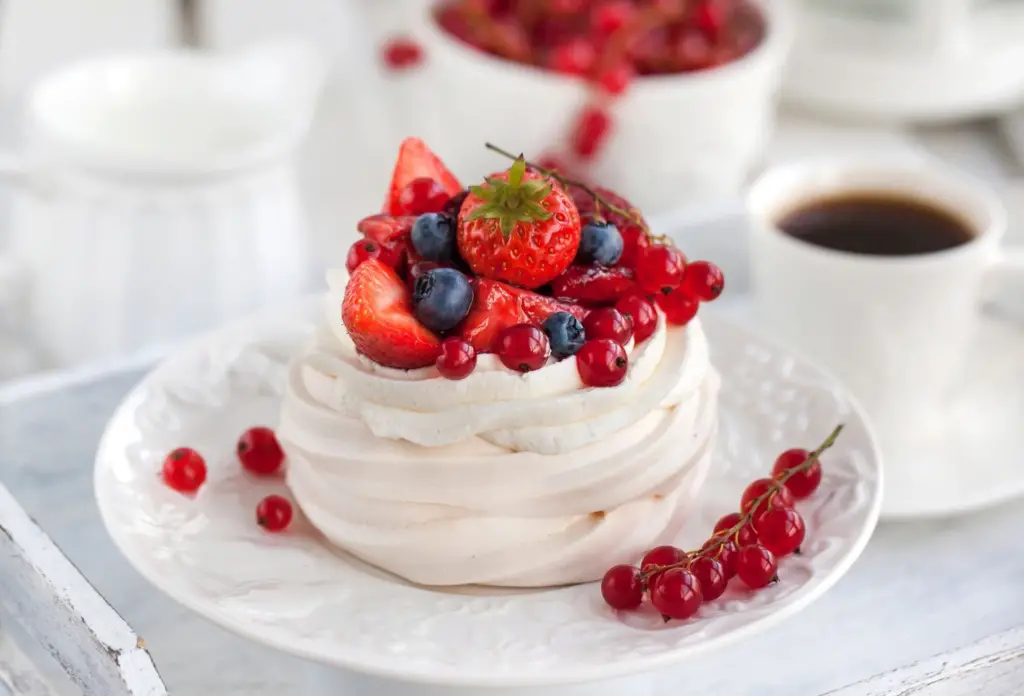
Pavlova, a meringue-based dessert named after the Russian ballerina Anna Pavlova, is a national treasure, with a crisp crust and soft, light inside, usually topped with fresh fruit and whipped cream.
New Zealand Cuisine – Ingredients for Pavlova
- Egg whites
- Caster sugar
- Cornflour
- White vinegar
- Vanilla extract
- Whipped cream
- Kiwifruit and strawberries
New Zealand Cuisine – How to Prepare Pavlova
- Whip egg whites until stiff peaks form, gradually add sugar, then fold in cornflour, vinegar, and vanilla.
- Shape into a circle on a baking sheet and bake at a low temperature until crisp.
- Top with whipped cream and fresh fruit before serving.
Pavlova is a showstopper dessert, best presented with a generous topping of colorful fruit and a dusting of icing sugar.
A sweet Riesling or a fruity dessert wine complements the sweetness and textures of the pavlova.
New Zealand Smoking Ban
If you have decided to visit this amazing country remember that they have banned the sale of any tobacco products t anyone born after January 1, 2009. The intention is that they will prevent future generations from taking up smoking and is part of a wider government push to make the country “smoke free” by 2025 – source CNN.
Conclusion
New Zealand cuisine is a reflection of its history, geography, and the diverse cultures that have made the islands their home. From the traditional Maori hangi to the British-inspired fish and chips, the food is a testament to the nation’s ability to blend traditions and flavors to create something uniquely their own.
With a focus on fresh, local ingredients and a willingness to embrace new influences, New Zealand’s culinary scene is as vibrant and varied as its stunning landscape.
FAQ’s
What is the most iconic dish in New Zealand cuisine?
The most iconic dish is arguably the pavlova, a dessert that has sparked friendly debates with Australia over its origin.
Are there any traditional Maori dishes still eaten today?
Yes, traditional Maori dishes like hangi-cooked meats and vegetables are still enjoyed, particularly during special occasions.
What role does seafood play in New Zealand cuisine?
Seafood is a staple in New Zealand cuisine, thanks to the country’s extensive coastline and fishing industry.
How has New Zealand’s agriculture influenced its food?
New Zealand’s rich agricultural land provides high-quality dairy, meat, and produce, which are central to its cuisine.
Can you find international cuisine in New Zealand?
Yes, New Zealand’s cities offer a diverse range of international cuisines, reflecting its multicultural population.
What is a typical starter course in New Zealand?
A typical starter could be whitebait fritters or a soup made with local ingredients like kumara and coconut.

